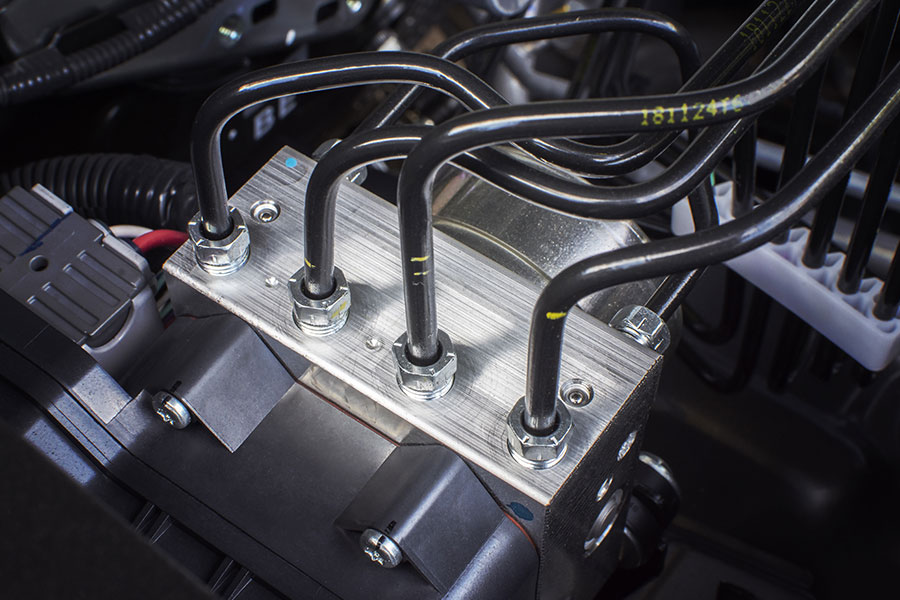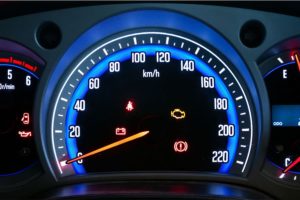There’s a common misconception that Anti-Lock Brakes help you stop faster. That is not always the case on loose gravel or snowy surfaces. Anti-Lock Brakes, in fact, are designed to help you maintain control of your vehicle in an emergency braking situation.
Imagine you are driving on a snowy road. You need to slam on your brakes and your rear wheels lock up. Chances are good that the rear end of your vehicle will try to pass the front end and you can easily lose control. What would happen in the same circumstance if your front wheels locked up? Well, you certainly would not be able to steer properly, and your front end would go to wherever gravity leads it.
 The Anti-Lock Brake System (ABS) modulates your brakes on and off as many as 15 times a second. This keeps your wheels from locking up while providing the greatest amount of braking possible. You are better able to steer your vehicle and maintain control. People often talk about the 3 S’s of Anti-Lock Brakes: Stomp – Stay – Steer. Stomp on the brake, Stay on the brake, and Steer normally.
The Anti-Lock Brake System (ABS) modulates your brakes on and off as many as 15 times a second. This keeps your wheels from locking up while providing the greatest amount of braking possible. You are better able to steer your vehicle and maintain control. People often talk about the 3 S’s of Anti-Lock Brakes: Stomp – Stay – Steer. Stomp on the brake, Stay on the brake, and Steer normally.
Modern ABS’s utilize a computer to receive information from sensors and control the anti-lock brakes. There are wheel speed sensors at each wheel reporting back to the computer which can then decide when to activate the anti-lock brakes on the wheel or wheels in need.
So, what affects how well the ABS works? First, the condition of your brakes, if your brakes are worn or not working properly, the ABS will not be able to do its job as effectively. A brake inspection will let you know if your brake shoes/ pads are in good condition, if there are any mechanical brake problems and if your brake fluid and power brake system need service. Proper brake fluid maintenance helps keep the brake control module in good working order. There can also be problems with the various sensors and the wiring that sends the messages to and from the computer. And of course, your tires need to be in good condition to have enough traction to start, stop, and steer. Worn tires are a big problem for ABS and Stability Control Systems.
 The ABS is the foundation of Stability Control Systems, providing the information needed for stability control as well as to strategically brake a wheel when needed, so making sure your ABS is working well is very important. Also, the rolling diameter of your tires is one of the factors on which the computer uses to base anti-lock decisions. If you buy tires that are more than 3% larger or smaller than the tires that were installed at the factory, the ABS and Stability Control systems will not work properly. The computer can be recalibrated for the new tire size so that the systems have the correct information.
The ABS is the foundation of Stability Control Systems, providing the information needed for stability control as well as to strategically brake a wheel when needed, so making sure your ABS is working well is very important. Also, the rolling diameter of your tires is one of the factors on which the computer uses to base anti-lock decisions. If you buy tires that are more than 3% larger or smaller than the tires that were installed at the factory, the ABS and Stability Control systems will not work properly. The computer can be recalibrated for the new tire size so that the systems have the correct information.
When you start your vehicle, the ABS light will briefly illuminate on the dashboard. If the system detects a problem with itself, the light will stay on. That is your cue to take your vehicle in for an inspection to determine the problem. Your qualified service facility is your partner in keeping this important safety system operating as it should.
Give us a call
D & D Service Center
224 West Center Street
Girard, IL 62640
217.627.3201
http://serviceassistant.autonettv.com
At D & D Service Center we install quality NAPA replacement parts.







